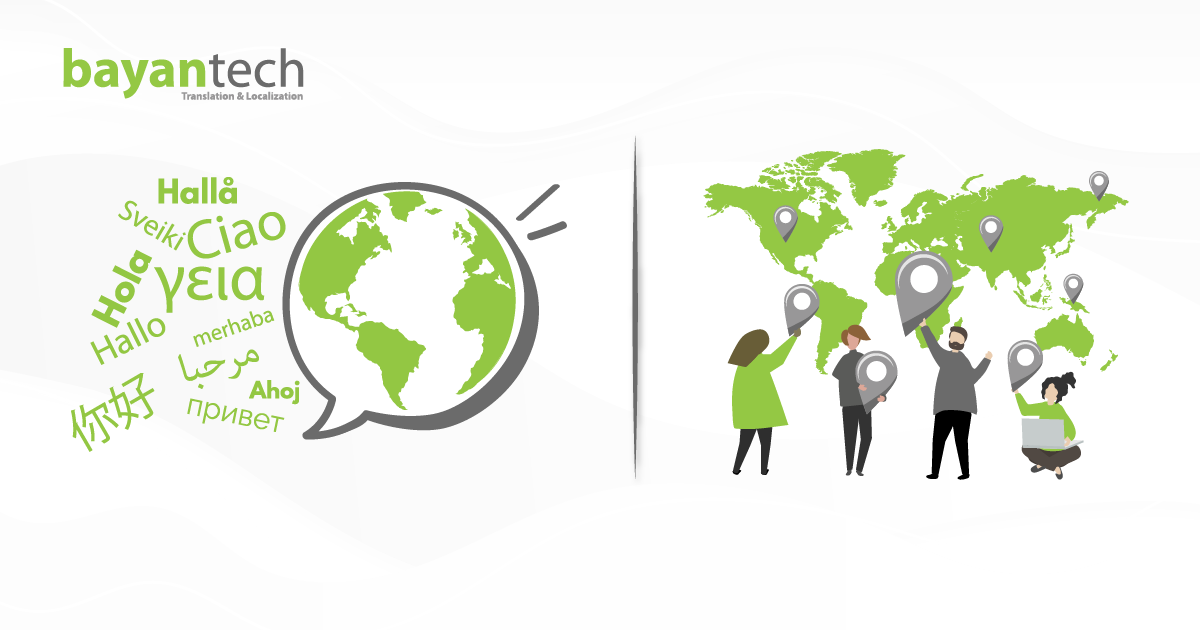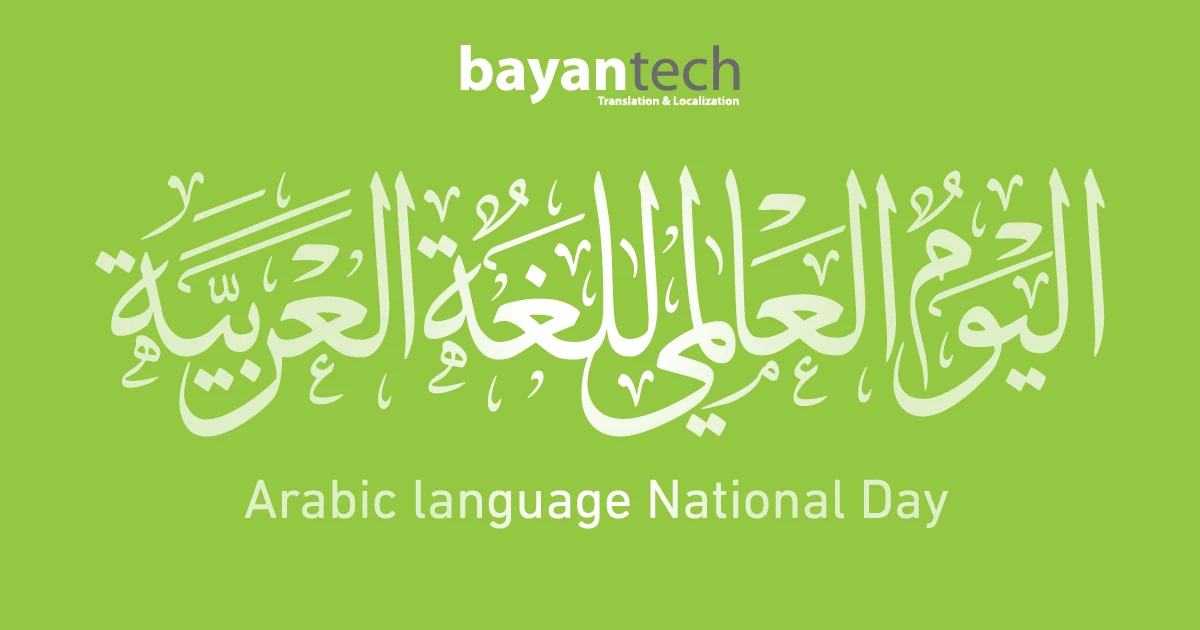Experts in the translation field can easily distinguish between these terms, but if you’re just starting to explore translation services, you might find them confusing. What is localization? How does it differ from translation? And which service do you actually need?
These are all valid questions. That’s why, in this article, we provide a clear breakdown of translation vs. localization, their key differences, and which service best suits your business needs. By the end of this read, you’ll be equipped to make informed decisions for your upcoming translation projects.
Definitions of Translation vs Localization
Translation
Translation is converting text from one language to another while maintaining its meaning. Language accuracy is its main focus; it’s used for technical or instructional texts like user manuals, legal documents, and product information.
Localization
Localization is a process that combines translation with cultural adaptation to ensure the final product feels familiar and relevant to the target audience on all levels, not just linguistically. It’s especially useful for creative content like marketing campaigns, software interfaces, apps, websites, and entertainment, where cultural nuances and user preferences play a crucial role.

How Translation and Localization Work Together to Create a Successful Experience for the Customer
- Language Translation
Language is the basis of communication, and the first step to localizing your content is translating the text accurately into the target language. Sometimes, translation alone is sufficient for straightforward texts, like product descriptions, catalogs, annual reports, and legal disclaimers.
- Localization and Cultural Relevance
However, for other types of content, the translator must go beyond semantics and ask, “What other aspects of this product need cultural adaptation?” Elements like design, imagery, colors, symbols, dates, and numerals often require adjustments to align with the target culture, like in-game localization.
Key Elements of Translation vs Localization in Content Strategy
- Content
Content localization involves adjusting text spacing to accommodate varying lengths in the target language, as well as ensuring proper alignment for right-to-left (RTL) or left-to-right (LTR) languages.
It also accounts for dialectical differences. For example, Americans take the elevator, while British people take the lift. Similarly, Egyptians say tamatem (tomatoes), while Lebanese people use banadūra.
- User Experience
A flexible UI/UX design that supports multilingual options enhances the user experience for global audiences. This also simplifies the translation and localization process for linguists working on your app or website.
User experience localization includes adapting chatbot messages, checkout pages, payment methods, currencies, measurement units, and date formats to suit the target audience.
- Visual Adaptation
Visual elements and images are localized by modifying colors and symbols to avoid cultural missteps. For instance, in China, red symbolizes love, wealth, and luck, whereas in some other cultures, it carries negative connotations.
Cultural backgrounds also influence visual adaptation. Some imagery may be acceptable in Western countries but considered inappropriate in Arab countries due to their more conservative values.
- Marketing Material
Marketing materials often rely on taglines, slogans, and wordplay to create an emotional impact that drives purchases.
That’s why localization is essential—ensuring that these elements resonate with the target audience. A well-adapted pun or cultural reference that the audience understands and relates to can make a marketing campaign far more effective.
Benefits of Combining Translation and Localization
- Well-Earned Customer Trust
How many of us have turned away from brands that use awkward or poorly translated content? The quality of translation plays a crucial role in brand credibility. The more relatable your product is, the more trust you build with your customers.
- Better User Experience
App and website users expect a smooth, intuitive experience, which is a key factor in an app’s ranking in app stores. Localizing action buttons, section titles, checkout pages, and other essential areas of an app or website helps create a seamless experience for native speakers.
- Higher Conversion Rates
Needless to say, delivering a trustworthy user-friendly experience leads to higher sales and conversion rates. According to Statista, 40% of global consumers do not prefer to purchase from a website in another language. And 73% prefer to read product reviews in their native language when shopping online.
- An Edge Over Your Competitors
A solid translation and localization strategy can give you a competitive advantage, enabling your brand to expand and thrive in international markets. Investing in professional translation services ensures your message resonates with global audiences.
Brands That Mastered Translation and Localization
Nintendo’s Animal Crossing has been a massive success in the U.S. market. The reason? A fully localized game.
“I’ll never forget [producer Takashi Tezuka] coming to us and saying, ‘If we’re going to [sell the game outside of Japan], you guys have to change everything,’ said Leslie Swan, former localization department head at Nintendo who worked on Animal Crossing.
In an article by Polygon, the publication highlights how impactful localization was in adapting Animal Crossing beyond direct translation—modifying foreign concepts to better resonate with the American audience.

Examples of Localization in Animal Crossing
- In the original Japanese version of Animal Crossing, there is an Oyashiro, a shrine that serves as the community center. However, since village shrines are an unfamiliar concept to American audiences, it was changed to a wishing well.
- An ancient Japanese wobbling doll called okiagari-koboshi was renamed “Wobbelina”, a non-literal adaptation of the name to make it more approachable for Western players.
- Another major localization change involved holidays. The Japanese version features cultural events like Children’s Day, whereas the American version features holidays like April Fool’s Day and Groundhog Day, ensuring relevance to the local audience.
- One of the localization team’s most notable efforts was rewriting hundreds of puns and jokes in English while maintaining their humor and intent. Bill Trinen, vice president of Nintendo of America, described the process:
“Translators start taking notes. ‘Okay, this is what it says. But this is what it really means, and it’s a pun on this, which doesn’t work in our language.’”
Beyond name changes, gender swaps, and even character removals, the localization team carefully adapted elements to fit American culture. However, not everything was changed.
Some distinctly Japanese concepts remained in the American version to preserve the game’s identity and introduce players to aspects of Japanese culture. Catching bugs as a pastime, traditional Japanese furniture, and feng shui (the art of placement) all remained integral to the gameplay experience.
With just a few localization examples of how Animal Crossing was carefully adapted, it’s clear that translation and localization are key to success in game localization—and beyond.
Translation vs Localization: Which Do You Need?
So, when it comes to translation vs localization, which service does your business need? Let’s do a quick recap!
- When to Use Translation
- For technical manuals
- Legal documents
- Product specs
- Scientific papers and journals
- Medical reports
- Style guides
- When to Use Localization
- Apps and websites
- Slogans and wordplay
- Creative marketing campaigns and ads
- Literary texts
- When to Combine Both
- Software and eCommerce platforms
- Game localization
- Cartoon dubbing
Start Your Global Expansion Journey Today!
Partner with bayantech for professional localization services and seamless translation into any target language. Whether you need precise translation for technical or instructional texts or full localization for your app or website, our team of professional linguists is here to help you succeed.
Click here to get a free quote for your project!







